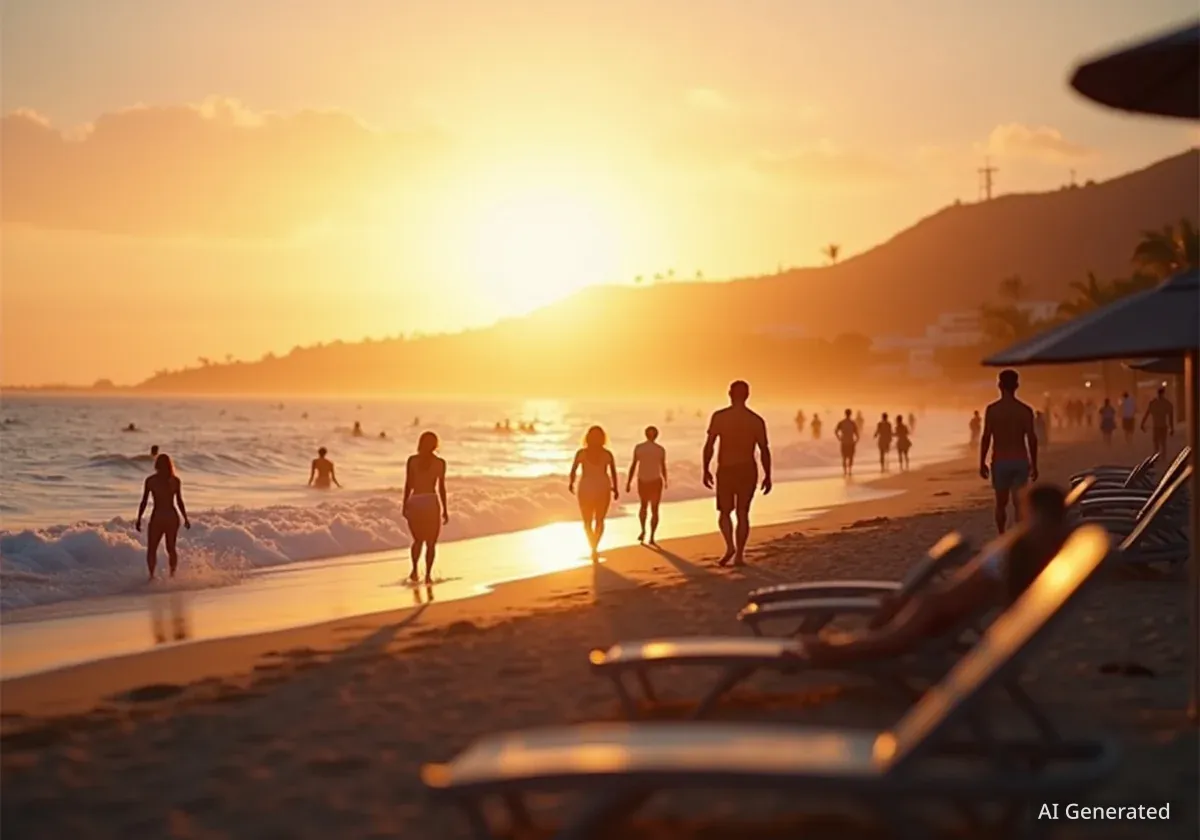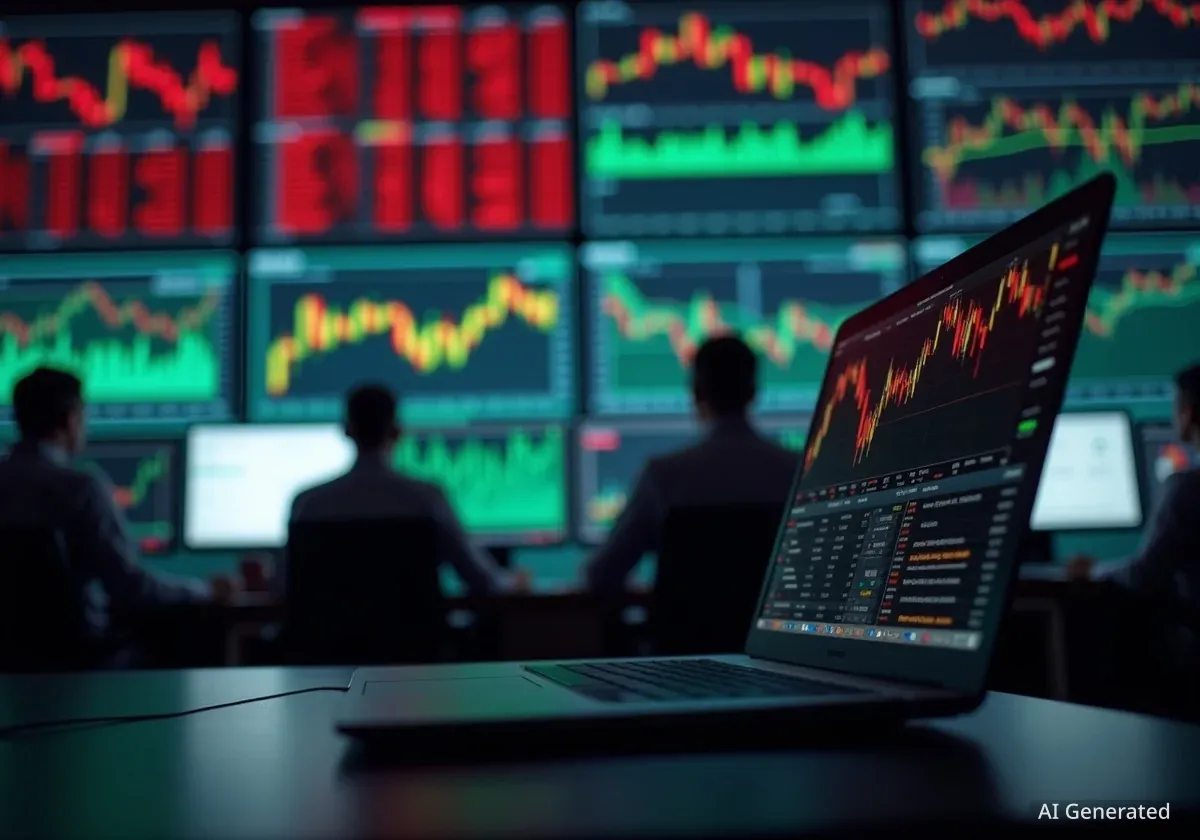Maui's tourism sector showed signs of recovery in August 2025, two years after the island's devastating wildfires. Preliminary data indicates an increase in visitor arrivals and a significant rise in visitor spending compared to the previous year. This growth highlights ongoing efforts to rebuild the local economy and support businesses affected by the 2023 disaster.
Key Takeaways
- Maui visitor spending increased by 23% in August 2025 compared to August 2024.
- Visitor arrivals rose by 2.3% in August 2025 year-over-year.
- West Maui hotel occupancy improved significantly, reaching 61.2%.
- Total visitor spending for the first eight months of 2025 exceeded both 2024 and 2019 levels.
August 2025 Performance Overview
In August 2025, Maui welcomed 205,182 visitors. This figure represents a 2.3% increase from the 200,598 visitors recorded in August 2024. However, the number of arrivals remains 25% below the pre-pandemic level of August 2019, when 273,638 visitors arrived on the island.
Visitor spending saw a substantial boost, totaling $430.7 million in August 2025. This marks a 23% increase compared to the $350.1 million spent in August 2024. Even more notably, current spending surpassed August 2019 figures by 6.4%, which stood at $404.7 million.
Important Statistics
- August 2025 Visitors: 205,182 (+2.3% from 2024, -25% from 2019)
- August 2025 Spending: $430.7 million (+23% from 2024, +6.4% from 2019)
- Average Daily Census: 48,584 visitors (+3.0% from 2024, -24.7% from 2019)
Year-to-Date Trends and Economic Impact
The positive trend extends beyond August. For the first eight months of 2025, Maui has hosted over 1.7 million visitors. This is an 8.3% increase compared to the same period in 2024. Despite this growth, the total visitor count for the year remains 18.8% below the 2.1 million visitors seen in 2019.
Total visitor spending for the January to August 2025 period reached $3.91 billion. This represents an 11.1% increase over the same period in both 2024 and 2019. The rise in spending indicates that while fewer people may be visiting compared to pre-pandemic levels, those who do visit are spending more money on the island.
Post-Wildfire Recovery
These statistics are particularly significant as Maui continues its recovery efforts following the August 8, 2023 wildfires. The Department of Business Economic Development and Tourism (DBEDT) provides these preliminary figures, which are closely watched by local businesses and residents.
Hotel Performance and Regional Improvements
According to DBEDT's August 2025 Hotel Performance Report, Maui County hotels reported an islandwide occupancy rate of 62%. This is an improvement from 55.2% recorded in August 2024. Specific regions showed even stronger recovery.
West Maui, which includes areas like Lahaina, Kāʻanapali, and Kapalua, saw notable improvements. Hotel occupancy in this region reached 61.2%, a significant rise from 50.8% in August 2024. This indicates a strong return of visitors to areas directly impacted by the wildfires.
"There have been improvements in tourism on Maui, two years after the August 8, 2023 wildfires," said DBEDT Director James Kunane Tokioka. "Hotel occupancy rates on Maui have also improved."
Statewide Tourism Performance in August 2025
Across the Hawaiian Islands, total visitor arrivals in August 2025 were 806,776. This was a 2.6% decrease from August 2024. However, similar to Maui, visitors spent more on a daily basis. The average daily spending per person was $251, a 4.5% increase.
This increased daily spending contributed to a 3.0% growth in total visitor spending statewide, reaching $1.72 billion (in nominal dollars). Overall, August 2025 visitor arrivals represented an 87.1% recovery compared to August 2019. Total visitor spending statewide was 14.4% higher than August 2019, which saw $1.50 billion in spending.
Visitor Demographics and Travel Patterns
All 806,776 visitors in August 2025 arrived by air service. The majority came from the US West and US East regions. No out-of-state cruise ships visited Hawai‘i during the month. This pattern is consistent with August 2024, where 828,326 visitors arrived by air and no cruise ships were recorded.
In August 2019, there were 926,417 total visitors, all arriving by air. The 2025 figures show a 12.9% decrease in total air arrivals compared to 2019. The average length of stay for visitors in August 2025 was 8.49 days, a slight increase from 8.39 days in August 2024 (+1.2%) and 8.46 days in August 2019 (+0.4%).
Key Visitor Source Markets (August 2025)
- US West: 420,902 visitors (0.0% vs. 2019). Total spending: $793.6 million (+37.0% vs. 2019). Daily spending: $234 per person (+39.7% vs. 2019).
- US East: 189,568 visitors (-5.1% vs. 2019). Total spending: $498.5 million (+31.5% vs. 2019). Daily spending: $284 per person (+38.1% vs. 2019).
- Japan: 83,699 visitors (-47.9% vs. 2019). Total spending: $130.2 million (-45.1% vs. 2019). Daily spending: $243 per person (+6.3% vs. 2019).
- Canada: 23,261 visitors (-18.9% vs. 2019). Total spending: $53.2 million (-7.0% vs. 2019). Daily spending: $225 per person (+26.5% vs. 2019).
Air Travel Capacity and Future Outlook
Air capacity to Hawai‘i in August 2025 included 4,960 transpacific flights with 1,104,220 seats. This represents a decline compared to previous years. In August 2024, there were 5,045 flights with 1,117,853 seats. August 2019 saw 5,469 flights with 1,212,926 seats.
Despite the slight decrease in overall flight capacity, the increased spending per visitor suggests a shift in tourism patterns. Visitors are staying slightly longer and spending more per day, which contributes positively to the local economy. The continued recovery in West Maui is a particularly encouraging sign for the island's long-term tourism outlook.
Other international markets, including Oceania, Other Asia, Europe, Latin America, Guam, the Philippines, and the Pacific Islands, contributed 89,346 visitors in August 2025. This was a 2.0% decrease from August 2024 and a 23.4% decrease from August 2019.
The data shows a complex but generally positive picture for Maui's tourism. While visitor numbers have not fully returned to pre-pandemic levels, increased spending and regional recovery indicate a resilient industry adapting to new market conditions.





